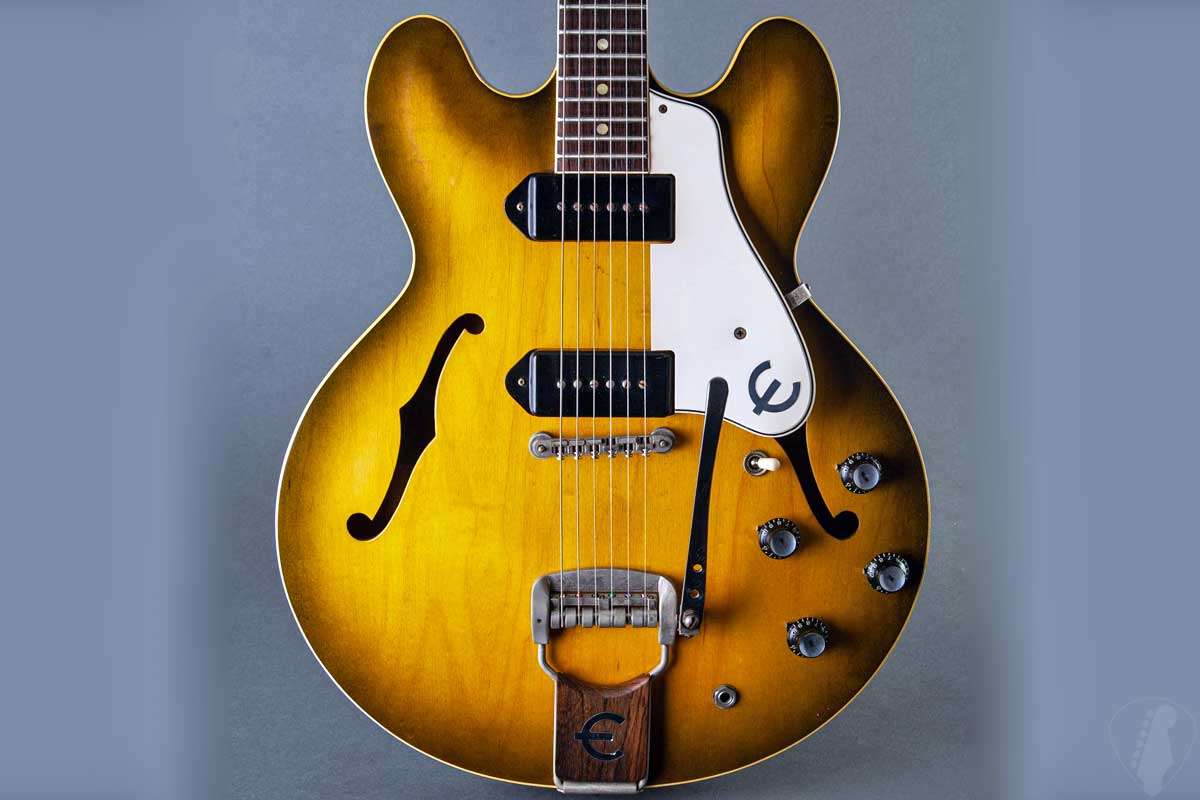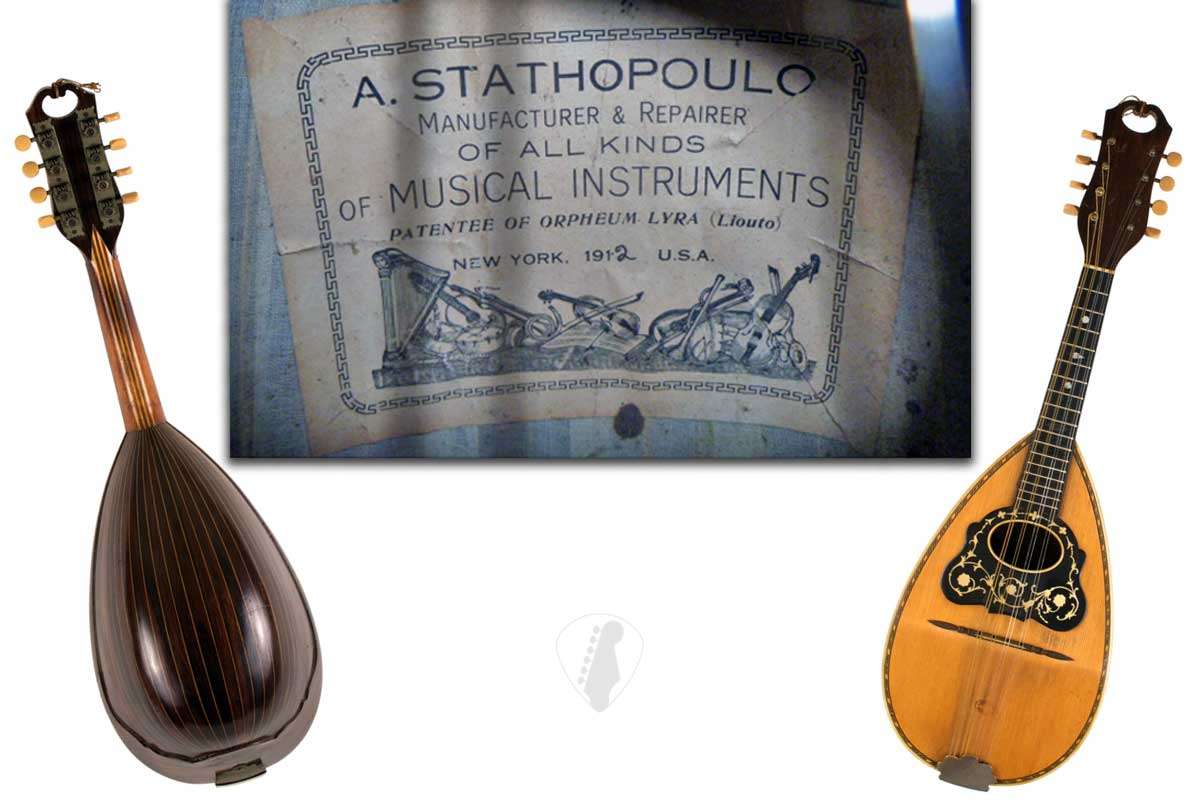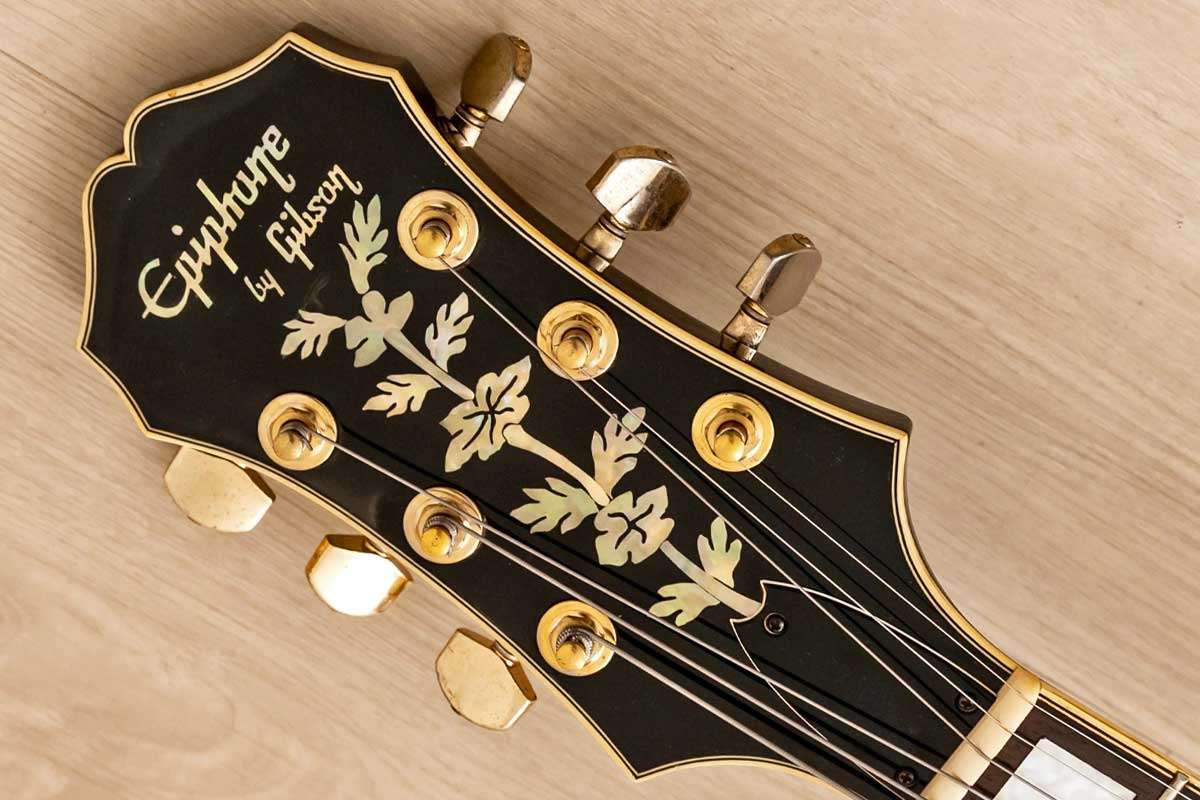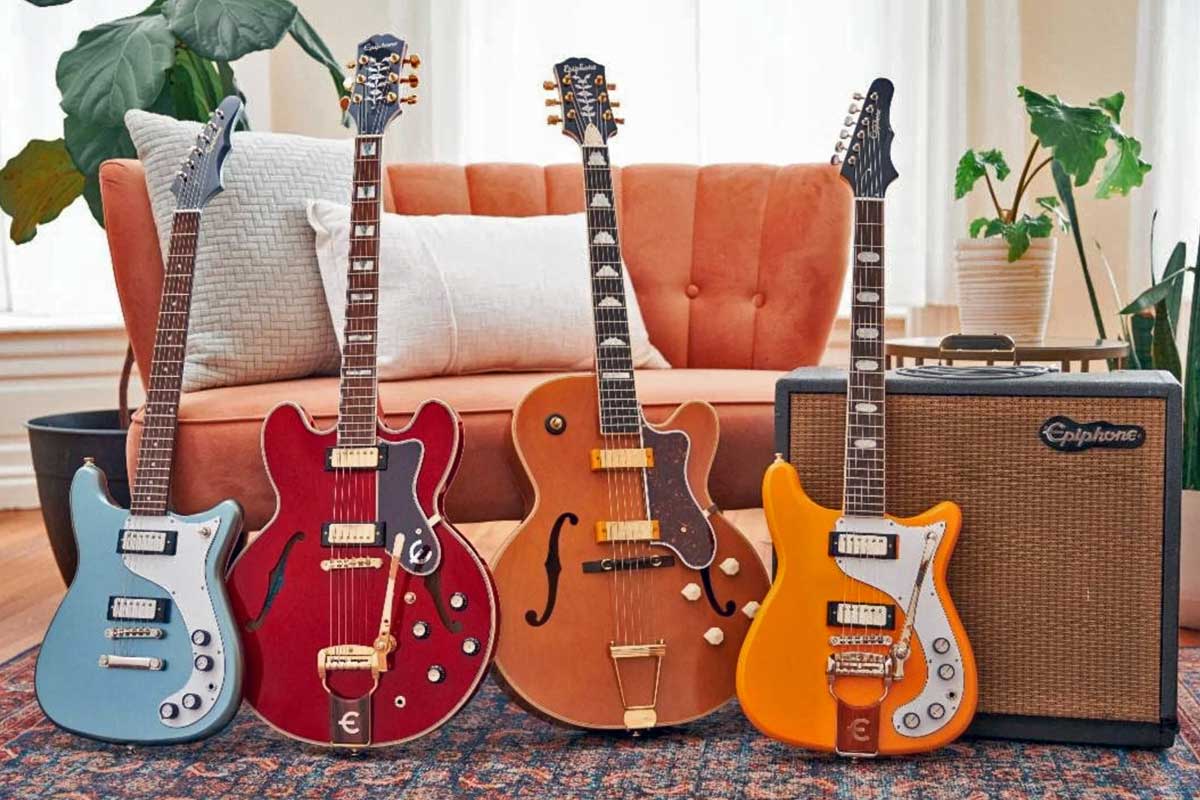The Epiphone guitar history begins in the early 20th century when the brand emerged as a leading manufacturer of fretted instruments. Initially, Epiphone specialized in the creation of mandolins, banjos, and later archtop guitars, which gained significant popularity among jazz musicians. The company’s approach to guitar making was driven by a commitment to innovation and quality, which is exemplified through features such as the trademark cutaway on their early models.
With the advent of rock ‘n’ roll, Epiphone guitars found a new audience. The brand became a major player in the electric guitar industry, rivaling even the likes of Gibson, though it eventually was acquired by Gibson in the late 1950s. This acquisition marked a new chapter for Epiphone, allowing the brand to expand its reach beyond previous limitations.
Epiphone has since established itself as a maker of highly regarded instruments that cater to both beginner players and seasoned professionals. Known for offering affordable versions of Gibson model guitars, Epiphone continues to honor its heritage through reissues of classic models and innovations that appeal to modern guitarists. Their ongoing reputation is a testament to the enduring quality and lasting influence of Epiphone in the world of electric guitars.

Origins and Early Years
The journey of Epiphone guitars is deeply rooted in the ingenuity of Anastasios Stathopoulo, a Greek immigrant whose vision and craftsmanship laid the foundation for a brand that would become synonymous with quality stringed instruments. From a small family business to a company that challenged the industry giant, Gibson, Epiphone’s early years are a testament to innovation and the American dream.
Anastasios Stathopoulo’s Vision
Anastasios Stathopoulo, born in the late 19th century, was a luthier hailed from the Ottoman Empire. Carrying his craftsmanship and entrepreneurial spirit, he immigrated to the USA and established his business in New York, where he began making lutes, fiddles, and lioutos.
The House of Stathopoulo
“The House of Stathopoulo” flourished in the early 20th century, capitalizing on America’s growing interest in folk and orchestral music. The Stathopoulo family’s commitment to quality was evident in each instrument they crafted—guitars, mandolins, and other traditional instruments became fixtures in American music culture.

Transition to Epiphone Banjo Company
In the 1920s, under the leadership of Anastasios’s son, Epi Stathopoulo, the business rebranded to the “Epiphone Banjo Company”. This strategic move was a response to the growing popularity of banjos, with Epiphone becoming one of the largest manufacturers of banjos in the USA.
From Banjos to Guitars
As the 1930s approached and the musical landscape shifted towards the guitar, Epiphone adapted. They transitioned from making primarily banjos to producing guitars. It wasn’t long before Epiphone guitars stood as legitimate rivals to Gibson, setting the stage for a storied competition that pushed both companies to heights of innovation and design.
Epiphone’s Golden Age
The period often referred to as Epiphone’s Golden Age marks a time when the company was at the forefront of guitar innovation, known for its rivalry with Gibson and the iconic models that captured the attention of legendary artists like The Beatles.
Iconic Models Introduced
During this period, Epiphone introduced several iconic guitar models that are still celebrated today. The Masterbilt series set a standard for acoustic guitar quality, while electric models like the Sheraton and Riviera became staples among jazz and rock musicians. Each model boasted distinctive features such as superior archtop designs and the incorporation of electric pickups on hollowbody guitars, amplifying their versatility and appeal.
Rivalry with Gibson
The healthy competition between Epiphone and Gibson was a significant factor that propelled both companies to innovate. Initially, Epiphone rivaled Gibson in the archtop market, with models like the Deluxe, Broadway, and Emperor competing closely with Gibson’s offerings. Although Gibson eventually acquired Epiphone in the late 1950s, this rivalry had already fostered some of the most influential guitar designs of the time.
The Beatles and the Casino
The introduction of the Epiphone Casino further cemented the brand’s legacy during the Golden Age. This particular model gained legendary status when it was adopted by members of The Beatles. Both John Lennon and Paul McCartney used the Casino extensively, showcasing its unique hollowbody sound on some of their most memorable recordings. Lennon’s love for the Casino is well-documented, making it one of the most iconic guitars of the era.
Endorsements and Artist Relationships
Epiphone’s artist relationships and endorsements played a vital role in shaping its image. From jazz artists to rock ‘n’ roll bands, many prominent musicians endorsed Epiphone. The association with high-profile names not only enhanced Epiphone’s status but also contributed to its enduring reputation. Beyond The Beatles, numerous artists explored and pushed the sonic boundaries of Epiphone’s guitars, reinforcing the brand’s presence in a diverse range of musical genres.
Ownership Changes and Modern Era
Epiphone’s history in the late 20th and early 21st centuries is defined by strategic acquisitions and brand repositioning. Their journey has been marked by a significant partnership with a major player in the electric guitar industry, the expansion of manufacturing across the globe, and a dedication to quality craftsmanship influenced by their storied legacy.

Acquisition by Gibson
In 1957, the Gibson Guitar Corporation acquired Epiphone, which then led to pivotal changes in both brand direction and the production of electric guitars. This move preserved the Epiphone brand and allowed Gibson to utilize Epiphone to cater to a different segment of the guitar market.
Relocation and Global Expansion
Epiphone’s operations, originally rooted in Kalamazoo, Michigan, eventually moved to East Asia. By the 1970s, under the umbrella of Norlin, Epiphone guitars started production in Japan, and eventually moved to Korea with manufacturers like Samick. More recently, the brand has expanded its manufacturing to China, but it always ensured the electric guitar lineup adhered to a standard of quality resonant with the brand’s heritage.
Traditions Revisited: Modern Craftsmanship
Although production has globalized, Epiphone has consistently aimed to balance modern techniques with traditional craftsmanship. The guitars of the modern era emanate from various international locations, including facilities in the USA, attesting to the brand’s global footprint while continuing to honor the legacy of their origins in Philadelphia.
Celebrity Influence and Legacy Models
Renowned musicians have often been closely associated with Epiphone, bolstering the brand’s image and inspiring a series of legacy models. These guitars are based on the specifications and styles of influential players, contributing to the brand’s esteem in the world of electric guitars. Epiphone’s association with prominent artists maintains their relevance and influence in modern music culture.
Epiphone Today
Epiphone continues to thrive as a leading manufacturer of musical instruments, with a focus on guitars that cater to a wide array of musical styles and artist needs. It maintains a robust presence in the United States but has expanded its production and market reach into Asia, ensuring global availability of its products.

Product Line Expansion
Epiphone has diversified its offerings over time, introducing a range of instruments that fulfill the needs of various musicians. The company’s catalog highlights a variety of electric and acoustic guitars, including the classic Epiphone Texan, highly regarded for its rich sound. As part of its expansion, Epiphone celebrates its legacy through anniversary editions, giving homage to classic designs while integrating modern craftsmanship.
Technological Advancements
Innovation lies at the heart of Epiphone’s advancements, with developments in electric guitar technology shaping its current lineup. From cutting-edge pickup systems to state-of-the-art manufacturing processes, Epiphone invests in technology that enhances the music-making experience. The company continues to play a significant role at the NAMM show, where it unveils the latest in amplifiers and guitars, showcasing how traditional instruments can evolve with modern technology.
The Continuation of a Legacy
Epiphone’s dedication to its legacy is evident in every guitar they produce. They have managed to honor their historical roots while continuing to be a forward-looking, innovative brand. Epiphone’s influence can be found in music across multiple genres, played by artists who value the blend of quality, history, and innovation that Epiphone provides. Constantly responding to the ever-changing music industry, Epiphone adapts and thrives, ensuring their instruments remain at the forefront of music culture.
